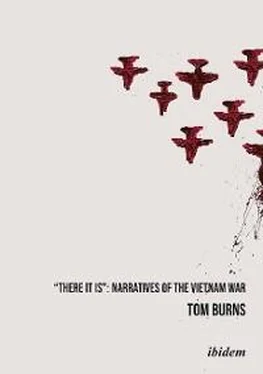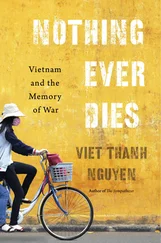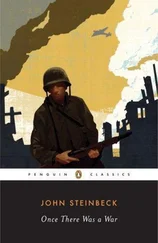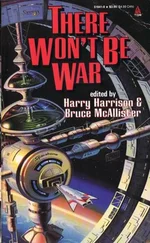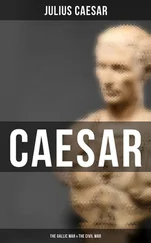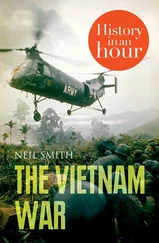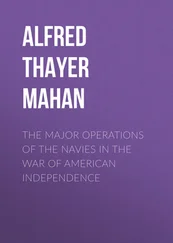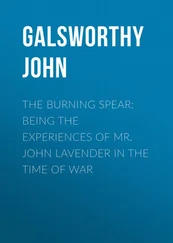Tom Burns - There It Is - Narratives of the Vietnam War
Здесь есть возможность читать онлайн «Tom Burns - There It Is - Narratives of the Vietnam War» — ознакомительный отрывок электронной книги совершенно бесплатно, а после прочтения отрывка купить полную версию. В некоторых случаях можно слушать аудио, скачать через торрент в формате fb2 и присутствует краткое содержание. Жанр: unrecognised, на английском языке. Описание произведения, (предисловие) а так же отзывы посетителей доступны на портале библиотеки ЛибКат.
- Название:There It Is: Narratives of the Vietnam War
- Автор:
- Жанр:
- Год:неизвестен
- ISBN:нет данных
- Рейтинг книги:5 / 5. Голосов: 1
-
Избранное:Добавить в избранное
- Отзывы:
-
Ваша оценка:
- 100
- 1
- 2
- 3
- 4
- 5
There It Is: Narratives of the Vietnam War: краткое содержание, описание и аннотация
Предлагаем к чтению аннотацию, описание, краткое содержание или предисловие (зависит от того, что написал сам автор книги «There It Is: Narratives of the Vietnam War»). Если вы не нашли необходимую информацию о книге — напишите в комментариях, мы постараемся отыскать её.
There It Is: Narratives of the Vietnam War — читать онлайн ознакомительный отрывок
Ниже представлен текст книги, разбитый по страницам. Система сохранения места последней прочитанной страницы, позволяет с удобством читать онлайн бесплатно книгу «There It Is: Narratives of the Vietnam War», без необходимости каждый раз заново искать на чём Вы остановились. Поставьте закладку, и сможете в любой момент перейти на страницу, на которой закончили чтение.
Интервал:
Закладка:
To make his protégé appear a more convincing leader, Landsdale persuaded Diem to counter-attack the Binh Xuyen, a powerful criminal organization that also had a private army. With Landsdale’s auxiliary force to help him, Diem’s troops crushed the Binh Xuyen on the streets of Saigon. Dulles thereupon countermanded his earlier order and the cable urging Diem’s removal was burned. 14Thanks to Landsdale, the US was now solidly behind Diem. Landsdale “sealed the commitment” by rigging the plebiscite that deposed Bao Dai and established Diem as President of the newly declared Republic of Vietnam. 15Had Dulles followed General Collins’s advice to get rid of Diem, the subsequent history of Vietnam, and that of the United States, might have been very different. It is generally agreed that the French would have sooner or later given up Vietnam to the Communists. 16
In an attempt to counter Communist influence in the countryside and the villages, where the “hearts and minds” of the people had to be won, Landsdale persuaded Diem to initiate a Civic Action program, which eventually failed because of Diem’s complete lack of interest in popular reforms. The land reform that Landsdale urged him to make for the same reasons actually ended up reversing the pattern of land ownership in the Mekong Delta (after the Viet Minh had made improvements in the direction of greater equality) toward the prewar levels of concentration of land in the hands of a very few. Half of the farmers remained landless. 17
Lansdale was also adept at courting American leaders. He was a favorite of President Kennedy, who received him at the White House only a few days after the inauguration. Advisor Walt W. Rostow gave the president Landsdale’s report on the current situation in Vietnam, which he read “with horrified fascination.” The report predicted an enemy offensive before the end of the year that could, in Landsdale’s view, be checked by American effort. Kennedy urged McGeorge Bundy of the National Security Council to get the story of Landsdale’s anti-Communist exploits in the Philippines published in the popular magazine The Saturday Evening Post , presumably to publicize him as a heroic figure in the struggle against Communist tyranny. 18As FitzGerald puts it, Landsdale had “faith in his own good motives…a man who believed that Communism in Asia would crumble before men of goodwill with some concern for ‘the little guy’ and the proper counterinsurgency skills.” 19
In a crucial mission in October 1961, Kennedy sent Landsdale, along with arch cold-warrior Rostow, on General Maxwell Taylor’s mission to Vietnam to evaluate what could be accomplished by US forces there. According to David Halberstam, The Taylor-Rostow Report revealed “a complete misunderstanding of the nature of the war.” 20It was contemptuous of an enemy that had for centuries successfully resisted foreign invasion; it assumed that the people and the government of South Vietnam were identical; and it was endorsed by a general who himself had seen the danger of ground war and the limits of air-power in Korea and who ignored the warnings of his great predecessor, General Matthew Ridgeway. Nevertheless, with reservations by Robert McNamara, the report would eventually be adopted as policy. It advised an increase in the Military Assistance Advisory Group (MAAG) and the introduction of an American military task force. 21It may be concluded then that Landsdale was directly influential in bringing about the American War in Vietnam, both in his advisory capacity to the American leadership and through his influence on Ngo Dinh Diem in Vietnam. As Neil Sheehan has succinctly put it, South Vietnam was in no small measure the creation of Edward G. Landsdale. 22
ii. Graham Greene, The Quiet American (1955)
When the first important novel in English about Vietnam was written, Greene’s The Quiet American , the United States had not yet arrived there in force. The novel’s setting is Saigon in the final years of French colonial rule in Indochina before Dien Bien Phu. Internal evidence suggests that the events of the novel take place in 1951-1952, since at one point the narrator, Thomas Fowler, a British newspaper correspondent, observes that any news he might report will go unnoticed because everyone now wants to read about the Korean War. 23There is also a reference in the text to “de Lattre” (114), that is, Commanding General Jean de Lattre Tassigny, who died of cancer in January 1952, after a trip to the US to plead for an increase of American aid. 24
At this point in time, the Americans were not yet militarily involved but were giving the French material aid, including arms, to prosecute the colonial war. Fowler at one point watches American bombers being unloaded on the docks (the US began subsidizing the French military effort in 1950). 25Characters in the novel are constantly aware that large areas of the country, even the other side of the river in Saigon, are controlled by the Vietminh, whose clandestine organization seems to have ubiquitous eyes and ears, as well as closed mouths. With reference to the Viet Minh agent whom Fowler meets, for example, “everybody here knew all about Mr Muoi, but the police had no key which would unlock their confidence” (142).
It has been assumed by most commentators that Landsdale was the model for Greene’s title character, the operative Alden Pyle—notably, Charles Currey, in his biography: Edward Landsdale: The Unquiet American (1988). 26Charles J. Gaspar’s entry on the novel in the Vietnam Encyclopedia , on the other hand, argues that Pyle is a composite figure, blending Landsdale with Leo Hochstetter, a member of the American legation in Saigon. 27Judith Adamson, in her critical study of Greene, argues that the real-life model for Pyle was an American attached to an economic aid mission (perhaps Hochstetter, although he is not named), who once shared a room with Greene and lectured him on the necessity of creating a “third force” in Vietnam that he thought might be led by the self-styled General Thé, as actually occurs in the novel. 28Greene himself comments on this encounter in his memoir Ways of Escape (1980). He assumed that the man in question worked for the CIA but noted that his “companion bore no resemblance at all to Pyle, the quiet American of my story—he was a man of more intelligence and less innocence.” 29
The long-running, back-and-forth controversy over a positive identification of Landsdale as Pyle is perhaps best illustrated by John Clark Pratt, who, in an early commentary on Vietnam War fiction, wrote that Pyle was “unmistakably modelled on Landsdale,” who was also the model for “a major character” in at least two other novels. 30In a footnote, Pratt added that “Landsdale believes he was the model,” because in 1983, he told Pratt (who was, like Landsdale, a Lieutenant-Colonel in the US Air-Force) that he thought he was the model, noting that both he and Pyle owned dogs. In the Introduction (1996) to his critical edition of Greene’s novel, however, Pratt evidently changed his mind, pointing out that the historical context of the novel, the years 1951-1952, predates Landsdale’s actual arrival in Vietnam: one month (incognito) in June 1953, and then the two years that he headed the SMM in 1954-56. 31
Greene, for his part, always denied that he knew Landsdale personally, commenting in an interview for the British Sunday Telegraph (in 1975) that he had “never had the misfortune to meet” him. 32Of course, Greene would not have to have actually met Landsdale in order to use him as a fictional model, only to have heard of him, but it is not altogether certain that the two men—despite Greene’s denial—did not meet. Pratt cites a letter apparently addressed to himself in which Landsdale mentions that the French hated the Cao Daist General Thé (who goes by his real name in the novel), for having had the popular French General Chanson killed: “I was his [Thé’s] American friend and the French used to mock me about him in the presence of Greene .” 33In an interview with his biographer, Charles Currey, Landsdale mentions at least one episode when such a thing happened, recalling that a group of French officers, with Greene among them, booed him at the Continental Hotel. And yet, as Pratt observes, even this evidence is suspect, because Landsdale did not actually meet Thé until 1954, by which time Greene had left Vietnam and was already at work on the novel. 34
Читать дальшеИнтервал:
Закладка:
Похожие книги на «There It Is: Narratives of the Vietnam War»
Представляем Вашему вниманию похожие книги на «There It Is: Narratives of the Vietnam War» списком для выбора. Мы отобрали схожую по названию и смыслу литературу в надежде предоставить читателям больше вариантов отыскать новые, интересные, ещё непрочитанные произведения.
Обсуждение, отзывы о книге «There It Is: Narratives of the Vietnam War» и просто собственные мнения читателей. Оставьте ваши комментарии, напишите, что Вы думаете о произведении, его смысле или главных героях. Укажите что конкретно понравилось, а что нет, и почему Вы так считаете.
